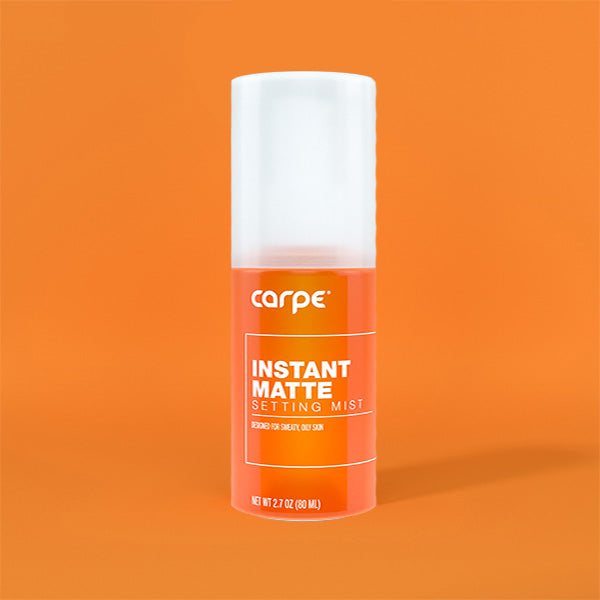Body odor has plagued people for thousands of years. In fact, soap was invented by the Phoenicians in 600 B.C. and ancient Egyptians are known to have bathed in perfumed water in an attempt to mask their body odor.[1] Luckily, these days there are many effective ways to manage sweat and prevent body odor from causing a problem. First, it’s important to understand how sweat causes body odor in the first place.
How Sweat Causes Body Odor
Humans have two types of sweat glands: eccrine and apocrine. Eccrine glands cover most of the skin’s surface and are used to maintain thermoregulation by cooling the body in times of high heat. They produce sweat that is initially clear and odorless. Apocrine glands, on the other hand, are larger than eccrine glands and are located within hair follicles. They only appear on the armpits, groin, and areolas. Apocrine glands produce sweat that is thicker and yellowish. The sweat from apocrine glands is most often associated with body odor. This is because it is made up of fatty acids and proteins that bacteria on the skin metabolize. The byproducts that bacteria create, like isovaleric acid and androsterone, give off a strong, unpleasant smell that we recognize as body odor.[1]
Some people have conditions that make them sweat excessively or have especially stinky sweat that make dealing with sweat and body odor even more difficult. Hyperhidrosis is a condition that causes people to sweat in excess of what is needed by the body for thermoregulation. Depending on the type of hyperhidrosis they have, a person may sweat excessively from certain areas of the body at random times (primary focal hyperhidrosis) or they may sweat all over (secondary generalized hyperhidrosis). Unfortunately, due to their high volume of sweat production people with hyperhidrosis often also struggle with the odor it can cause. When someone has especially stinky sweat it is referred to as bromhidrosis. People with bromhidrosis have body odor that is significantly worse than the average person and it can be socially isolating. However, there are effective ways for people with hyperhidrosis and bromhidrosis to manage their sweat that can drastically reduce symptoms and improve quality of life.[3][4]
How to Stop Body Odor Caused by Sweat
There are several ways to stop the sweat. The most important, and most obvious way to reduce to body odor is to prevent it by having good basic hygiene. This means showering once a day, changing clothes every morning or after sweating significantly, and applying antiperspirant and deodorant as needed. Removing the bacteria and sweat from your skin prevents body odor from forming in the first place. Unfortunately, in the real world people don’t always have time to wash up every time they sweat a little bit, which is where the use of antiperspirant and deodorant come into play.
Antiperspirant and Deodorant
Many people do not realize what antiperspirant is and how it differs from deodorant. Antiperspirants are agents that can be applied to the skin which prevent the production of sweat. They are considered to be the first line treatment for people with hyperhidrosis and can be extremely helpful for anyone who deals with sweat and stink on a regular basis.[3] When it comes to choosing the right over-the-counter antiperspirant there are a lot of options. There are several companies like Carpe, Dove, SweatBlock, Certain Dri, and many more that offer options with different active ingredients and in different applicators. The FDA regulates the active ingredients in antiperspirant as it is considered to be a drug. There are different active ingredients, but most antiperspirant use some type of metallic salt to plug sweat glands and prevent sweat production. Most of the time antiperspirant comes in a stick, spray, or gel form which can be applied to the body. Some companies, like Carpe and SweatBlock, also sell antiperspirant lotions and wipes that can be especially helpful for those who struggle with sweaty hands and feet.
Deodorant is different from antiperspirant because it is made to mask any odors that are already present and kill bacteria on the skin to prevent them from producing more odor. There is no one best deodorant, but often combination products that contain both antiperspirant and deodorant are the most effective when combating body odor. Combination products are called antiperspirant deodorants.
Other Treatments
Aside from maintaining good hygiene and using antiperspirant and deodorant products there are a few things you can do to get rid of body odor caused by sweat. One other simple adjustment you can make is to wear fibers that are breathable, like organic cotton, or moisture wicking. There are some specific types of clothes that are best for people who struggle with excessive sweating. Finally, if all else fails, there are some medical treatments you could pursue.
A visit to your local dermatologist will give you a sense of what the best treatment options for you are, but here are a few ideas. If you struggle with excessive underarm sweating and smell you could try a local permanent procedure for axillary hyperhidrosis that stops your sweat glands in that area from being able to produce sweat. One example of this type of procedure is MiraDry. There are also prescription antiperspirants and antiperspirant wipes, called Qbrexza, that can help. There are many ways to manage sweat with and body odor with a doctor.
If you are struggling with sweat and body odor don’t give up because there are lots of treatments out there. Don’t let sweat be drain on your life!
Sources
- Ramirez, A. (1990, August). All About/Deodorants; The Success of Sweet Smell. Late Edition. Retrieved March 7, 2019.
- Huddle, J. R. (2014). Hyperhidrosis: Causes, Treatment Options and Outcomes. New York, NY: Nova Science.
- Pariser, D. M. (2014). Hyperhidrosis (4th ed., Vol. 32). Philadelphia, PA: Elsevier.
- Eshini, P., & Sinclair, R. (2013). Hyperhidrosis and bromhidrosis: A guide to assessment and management. Australian Family Physician, 42(5), 266-269. Retrieved March 7, 2019, from http://ezproxy.co.wake.nc.us/login?url=https://search.proquest.com/docview/1430424903?accountid=14867






16790753702383.jpg?v=1679075372)

16790746985853.jpg?v=1679074700)


16790757289763.jpg?v=1679075731)










